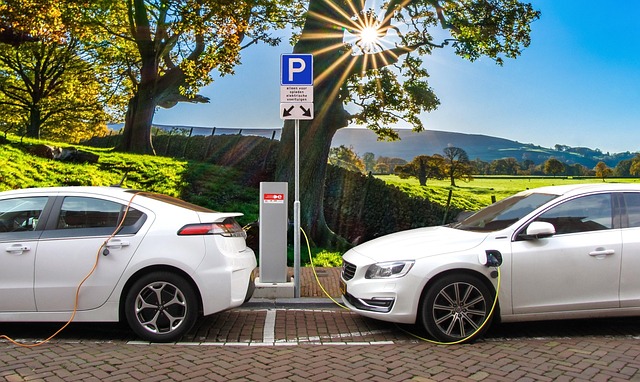“Unsure about how to register your car in California? This comprehensive guide breaks down the process step-by-step. First, understand the essential requirements for car registration in this state, including eligibility and necessary documents. Next, gather crucial paperwork like proof of ownership and insurance. Utilize a VIN verifier to check your vehicle’s history online. Then, complete the California Vehicle Registration Application and submit your car for inspection. Finally, finalize the process by completing the registration.”
- Understand the Requirements for Car Registration in California
- Gather Necessary Documents for Vehicle Registration
- Verify the VIN (Vehicle Identification Number) Using Online Tools
- Complete the California Vehicle Registration Application Process
- Submit Your Vehicle for Inspection and Registration Finalization
Understand the Requirements for Car Registration in California

Before you begin the registration process, it’s crucial to understand the requirements for car registration in California. This includes ensuring that your vehicle meets all safety and emissions standards set by the state. One essential step is obtaining a Vehicle Identification Number (VIN) inspection or verification. In California, this often involves utilizing services like a mobile VIN inspection or mobile VIN verification, which can streamline the process by allowing an authorized professional to conduct the necessary checks remotely.
During the registration, you’ll need to present valid documentation for your vehicle’s identification number (VIN), ownership history, and current state of repair. The California Department of Motor Vehicles (DMV) will also require proof of insurance and relevant fees. Understanding these requirements beforehand can help avoid delays and ensure a smooth car registration process in the Golden State.
Gather Necessary Documents for Vehicle Registration

Before you begin the registration process, make sure to gather all the essential documents required by the California Department of Motor Vehicles (DMV). One crucial piece of paper is the Vehicle Identification Number (VIN) verification report. You can obtain this using a mobile VIN verifier or through a formal vin inspection conducted by an authorized agent. This step is necessary as the DMV needs to confirm the vehicle’s identity and its compliance with safety standards.
Additionally, you’ll need your driver’s license, proof of insurance, and payment for the registration fee. It’s advisable to check the DMV’s website for the most up-to-date list of required documents to ensure a smooth registration experience. With all these preparations in place, you’re ready to take on the task of registering your car in California.
Verify the VIN (Vehicle Identification Number) Using Online Tools

One crucial step in registering your car in California is verifying your Vehicle Identification Number (VIN). This unique code is a critical piece of information that helps identify your vehicle accurately. There are numerous online tools available to assist you with this process, making it convenient and efficient. You can use these VIN verifiers to cross-check the authenticity of your car’s details before initiating the registration process.
These online platforms offer a simple and quick way to perform a VIN inspection. Some even provide mobile vin verifier services, allowing you to verify the information right from the comfort of your home or even while you’re at a California DMV office. This extra layer of scrutiny ensures that your vehicle’s history is transparent and accurate, which is essential for a smooth registration process.
Complete the California Vehicle Registration Application Process

To complete the California Vehicle Registration Application Process, you’ll first need to gather essential documents and information. This includes your vehicle’s Vehicle Identification Number (VIN), which can be found on the vehicle’s registration label or in its owner’s manual. Additionally, proof of insurance, a valid driver’s license, and the appropriate fees are mandatory. You can obtain a California Vehicle Registration Application (Form DV304) from the California Department of Motor Vehicles (DMV) website or any DMV field office. Fill it out accurately, ensuring your VIN is correctly noted, as this is crucial for identifying your vehicle during the registration process.
Once prepared, submit your application along with all required documents and fees at a DMV office. Alternatively, many counties in California offer online registration services, allowing you to complete the process remotely. A successful submission will result in a registration certificate and license plate issued for your vehicle. For those who prefer convenience, a mobile VIN inspection or verification service can also assist in ensuring your vehicle’s information is accurate before submitting your application.
Submit Your Vehicle for Inspection and Registration Finalization

After you’ve gathered all the necessary documents, it’s time to submit your vehicle for inspection and finalize its registration. This crucial step involves ensuring that your car meets California’s safety and emission standards. You’ll need to visit a designated Vehicle Inspection Station (VIS) with your vehicle and paperwork. Here, a trained inspector will conduct a thorough check, including a visual inspection and a vin verifier test to confirm the vehicle’s identity using its unique VIN (Vehicle Identification Number).
If your car passes the inspection, you’ll receive a Certificate of Compliance, which clears it for registration. You can then proceed with completing the registration process at the California Department of Motor Vehicles (DMV) office or online. This involves submitting the required forms and fees, along with the inspection certificate. For added convenience, many services offer mobile vin inspection and mobile vin verification, allowing you to complete this process from the comfort of your home or even while on the go.
Registering a car in California involves understanding the state’s requirements, gathering essential documents, verifying the VIN using reliable online tools, completing a straightforward application process, and finally submitting your vehicle for inspection. By following these steps and utilizing resources like a VIN verifier, you can ensure a smooth and efficient registration experience.
